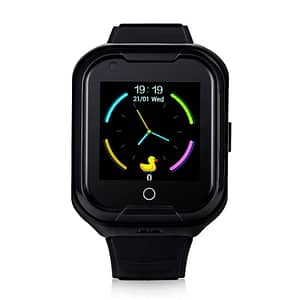All around the world, the first generation smart safety devices operated on the 2G network. These included alarms, cell phones etc. However, from around December 2016 a number of network service providers all over the world began shutting down their 2G networks. That gave to the rise of the emerging technologies that use 3G, 4G and now 5G. In New Zealand and Australia, only Vodafone has committed to keep its network infrastructure. So whats the Difference between 2G, 3G and 4G watches?
However, not all countries shut down their 2G networks. Manufacturers have continued to produce 2G enabled devices. As a result it has become important for consumers to understand the differences between 2G, 3G and 4G watches and compatible devices.
So what does all this mean? Well, depending on where you are located geographically it is important to understand what to look for in the technical specifications of a smart watch. It will help you determine what networks it will work with and whether it will work in your country. For example, in New Zealand, if a smart watch supported by Vodafone, Spark, 2 Degrees or Skinny Mobile simcard.
Cellular Networks Support for Smart Watches
2G –2nd generation compatible: GSM 850/900/1800/1900
3G – 3rd generation compatible and may be referred to as just bands: B1/B2/ B5 but can also be displayed as WCDMA or UMTS and the frequencies 2100/1900/850MHz
4G/LTE – 4th generation compatible/long term evolution: Bands B2/B3/B4/B5/B28
You may wonder why some frequencies are listed under both 3G and 2G, this is because the network service provider chooses what radio frequencies they offer their services on. For example Vodafone NZ currently assigns the 850Mhz to their 3G network. With this lower frequency offering coverage over a much greater distance and better penetration through buildings.
5G – The frequency bands for 5G networks come in two sets. Frequency range 1 (FR1) is from 450 MHz to 6 GHz, which includes the LTE frequency range. Frequency range 2 (FR2) is from 24.25 GHz to 52.6 GHz.
Single Band or Dual Band
As noted above frequencies on the 3G and above networks are often referred to as bands, and as such you may sometimes see a watch listed as a ‘dual band’ 3G model for example. What this means is the watch will work on more than one frequency/band providing greater options for coverage. If for example the watch only works on the 2100 MHz you may find that outside of major cities the watch struggles to connect to a cellular network. This does not necessarily mean an issue with the watch itself. It just an indication of the difference in network capabilities between 2G,3G, and 4G Watches
Checking Network Coverage
You can check network coverage by country from the link below
We are happy to also provide you with a link to country-based frequency band directory. It’s not operator-specific and it’s helpful if you are choosing smart watch to use in a specific country or going overseas.
You can also find out compatible network providers in a country of choice.
Network Providers by Network Band
Smart Watches NZ 2G,3G and 4G Gadgets
So when you are considering which watch to buy from Smart Trackers NZ it is worth having a read over the technical specifications to double check which network the device is compatible with. Better still contact us with a query, and we will be able to further explain the key difference between 2G, 3G and 4G watches for consideration.
It is also important to note however, that 3G but to a greater extent 4G devices will drain the battery much faster and will generally be larger in size compared to the 2G models. Hence more so the reason, 3G/4G devices are pricier and come with more functionalities and access to internet


